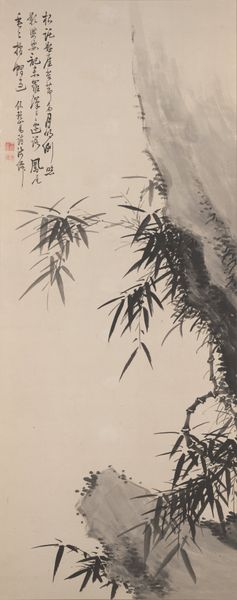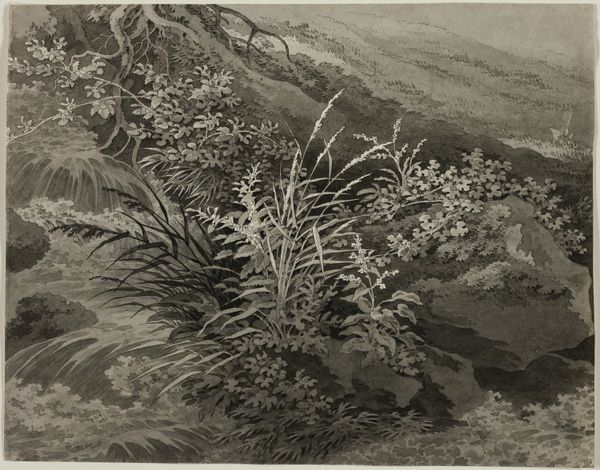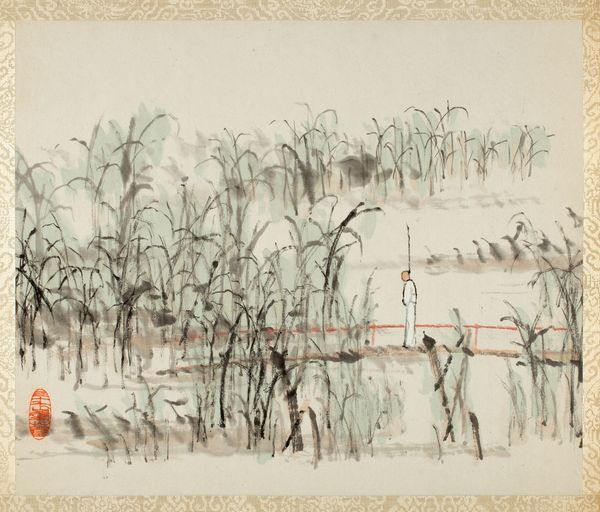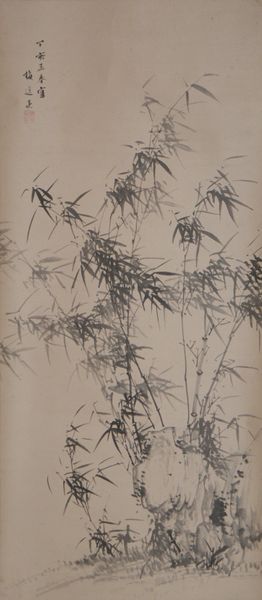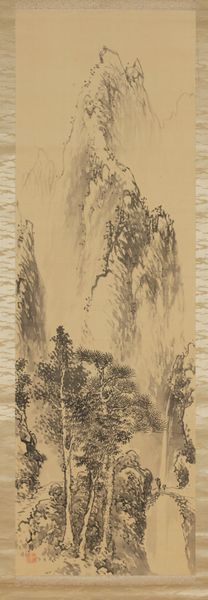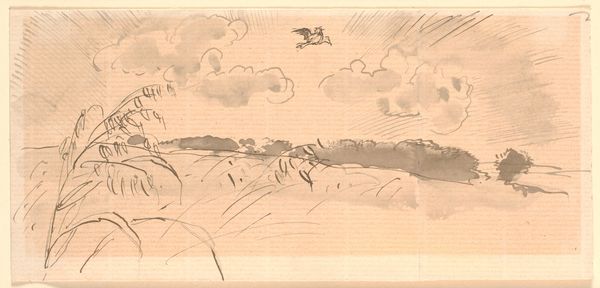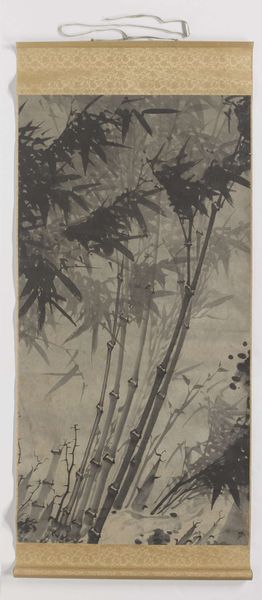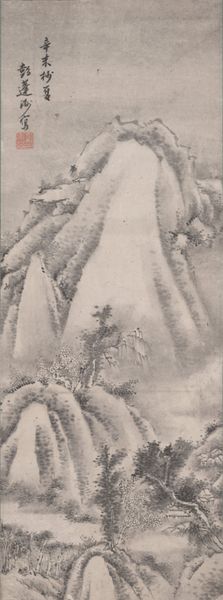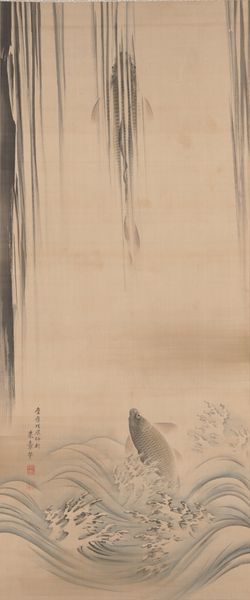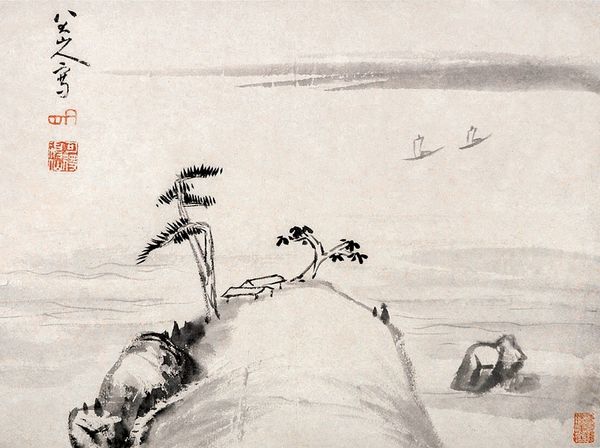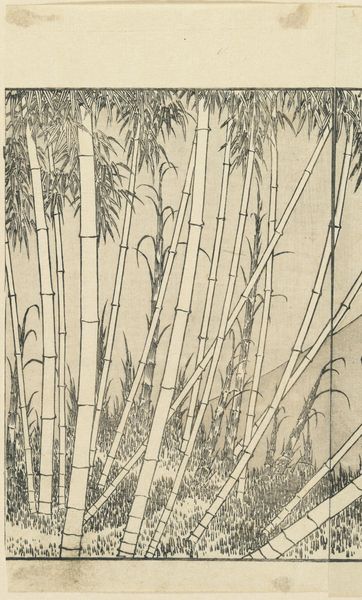
drawing, paper, ink
#
drawing
#
asian-art
#
landscape
#
paper
#
ink
Dimensions: 41.3 × 1500.0 cm (16 1/4 × 600 in.)
Copyright: Public Domain
Editor: This is "Bamboo-Covered Stream in Spring Rain," possibly from the Ming Dynasty, so between 1368 and 1644, by Xia Chang. It's an ink drawing on paper, and currently resides here at the Art Institute of Chicago. I find the monochromatic tones surprisingly vibrant. How would you interpret this work? Curator: Well, consider bamboo itself. In Chinese culture, bamboo symbolizes resilience, integrity, and flexibility – qualities highly valued, particularly for scholars and officials. Do you see how the artist uses a limited palette to convey so much? Editor: Yes, the different tones suggest mist and rain, despite it only being ink. Is there significance in pairing bamboo with rain, as the title suggests? Curator: Indeed. Rain nourishes bamboo, fostering its growth. Spring rain, especially, is symbolic of renewal and vitality. The bamboo bending in the rain could symbolize strength through yielding, and adaptability, so consider the image's cultural memory, resonating with ideals of perseverance during times of hardship. How does that strike you? Editor: It makes me think of finding strength in adversity. And, that landscape paintings weren't just about pretty scenery. Curator: Exactly. They’re visual metaphors laden with symbolism and cultural values, subtly reinforcing societal virtues and individual character. Every brushstroke carries intention. The painting doesn’t merely depict nature; it encapsulates philosophical concepts. Editor: So it's about reading the symbols, like a visual language? Curator: Precisely! And, this symbolic vocabulary evolves and adapts, continually enriching cultural narratives across generations. Understanding how artists utilize this vocabulary unlocks deeper layers of meaning. Editor: I hadn’t thought about it that way. Thanks, that gives me a lot to think about!
Comments
No comments
Be the first to comment and join the conversation on the ultimate creative platform.
